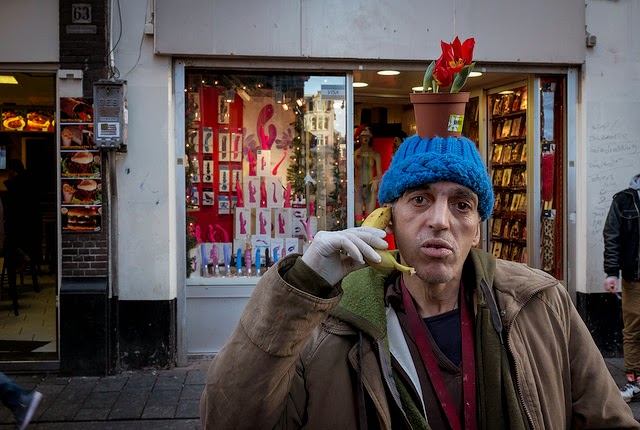This is a question I've asked a time or three: How does a writer keep readers turning the page?
1. Tell a gripping tale.
The best way to keep readers interested, to keep them reading/watching/listening, is the obvious one: Tell a gripping tale, one that connects with universal themes such as sacrifice, redemption, transformation, and so on; themes which readers/watchers/listeners can understand since we tend to go through similar life experiences.
We want the people we love to love us back (as opposed to ditching us for more attractive, younger, versions) and we want the people who hate us to get the strange syphilis (but not Xander, never Xander).
2. Tell a gripping tale filled with interesting characters.
The main characters of a riveting tale will be interesting and so we, the readers, will care what happens to them.
A character (generally speaking) can't be interesting if they aren't believable. And part of a character acting in believable ways; that is, making believable choices; is their choices flowing from the kind of pseudo-people they are. Or, rather, the kind of pseudo-people we perceive them to be.
3. Tell a gripping tale filled with interesting characters who want things.
The characters of a gripping tale will have strengths and flaws and they will want things. Some of the things they want will be insignificant and silly, perhaps even embarrassing, but some of them--at least one of them--will likely be big and important and difficult to attain.
4. Tell a gripping tale filled with interesting characters who want something that is difficult to attain.
Although in real life it would be wonderful to buy a lottery ticket the day before the big draw and then find out that, yes, you picked the winning number, it wouldn't make for an exciting story.
"Jane wants to win the lottery. Jane buys a lottery ticket. Jane wins the lottery."
Boring.
"Jane wants to win the lottery. Jane buys a lottery ticket with the last of her savings. Jane discovers she's won the lottery. Excited, she goes to get the ticket from her wallet but ... it's not there!"
Still boring, but better.
5. Create interesting and believable opposition
There needs to be some sort of opposition to prevent the protagonist from getting what he wants too easily. The opposition should be strong and produce a credible threat to the protagonist's goals.
This means that the protagonist has to be better--more skilled, more intelligent, or perhaps just luckier--than the forces that oppose him.
6. Surprise your reader.
But in a good way. Jumping out from behind a potted plant as your mother gets to the part where the cat morphs into a hideous man-eating monster doesn't count.
(Major spoilers about American Beauty coming up in three, two, one ...)
I think one of the tensest scenes I've watched was in American Beauty, toward the end, when the protagonist, Lester, is working out in his garage. His daughter's boyfriend's homophobic father, the Colonel, comes over and we--the audience--are sure that something bad is going to happen. We know the protagonist is going to die and we know the Colonel suspects Lester is in a homosexual relationship with his son.
The stakes are life and death, we're just not sure whodunit. Will the next door neighbour be the one to kill Lester?
Then (surprise!) the next door neighbour, the homophobe, kisses Lester! I was stunned. It was a great twist but one that, looking back, made sense.
That said, this scene wouldn't have been as tense as it was if the audience didn't know what the stakes were.
(To read more about the importance of surprise I recommend 7 Tools to Hook Your Reader by Monica M. Clark. )
7. Make the stakes clear.
In American Beauty the stakes were life and death. Yes, we knew the protagonist was going to die from the beginning, but we didn't know how he would die or who would kill him.
I've mentioned the scene where the Colonel kisses Lester, that scene wouldn't have been tense if we didn't know the stakes. Yes, we knew that Lester died at the end, but that fed the suspense.
8. Write the story you would love to read.
A writer's emotions bleed through into the story.
To write a good horror story, one that makes the reader too scared to go to sleep and necessitates the use of a night light, the writer needs to be a little horrified. To write a good mystery, the writer needs to construct a puzzle that's interesting to her.
Above all, if the writer is bored by the story then, chances are, the readers will be as well.
# # # #
The attribution is contested, but Ernest Hemingway is said to have once muttered: Writing is easy, you just sit down at the typewriter and bleed. That's the key: Sit down and connect with your emotional core then transfer some of that to your characters.
Good writing!












